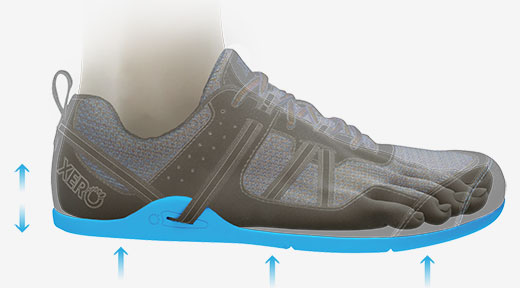Introduction
Barefoot shoes have gained popularity in recent years as a way to mimic the natural feeling of walking or running barefoot while still providing some protection for the feet. One common question that arises when it comes to barefoot shoes is whether or not you can wear socks with them. In this article, we will explore the pros and cons of wearing socks with barefoot shoes and provide you with all the information you need to make an informed decision.
Can You Wear Socks with Barefoot Shoes? Pros and Cons
Wearing socks with barefoot shoes is a personal preference, and there are both pros and cons to consider. Let's take a closer look at each side of the argument.
Pros of Wearing Socks with Barefoot Shoes
Added Comfort: Some people find that wearing socks with their barefoot shoes adds an extra layer of comfort, especially if they have sensitive feet or are prone to blisters.
Improved Hygiene: Wearing socks can help absorb sweat and prevent odors, keeping your feet feeling fresh and clean even during intense workouts.
Protection from Chafing: Wearing socks can help reduce friction between your feet and the barefoot shoe, preventing chafing and blisters.
Extra Warmth: If you live in a colder climate or plan on using your barefoot shoes during winter months, wearing socks can provide some additional warmth.
Versatility: Wearing socks allows you to easily transition from outdoor activities to indoor settings without having to remove your shoes.
Cons of Wearing Socks with Barefoot Shoes
Reduced Sensory Feedback: One of the main benefits of barefoot shoes is that they allow your feet to feel the ground beneath them, promoting better balance and proprioception. Wearing socks can dampen this sensory feedback.
Changes Shoe Fit: Wearing socks with barefoot shoes can alter the fit and feel of the shoe, potentially leading to discomfort or a less secure fit.
Increased Risk of Slippage: Socks can make your feet slippery inside the shoe, increasing the risk of slipping or sliding during activities.
Less Breathability: Barefoot shoes are designed to be breathable, allowing air to circulate around your feet. Wearing socks can reduce this breathability and potentially lead to sweaty or overheated feet.
Aesthetics: Some people prefer the look of barefoot shoes without socks and find that wearing socks detracts from the overall aesthetic.
Frequently Asked Questions (FAQs)
Q: Are barefoot shoes suitable for everyone? A: While barefoot shoes can offer benefits for many individuals, they may not be suitable for everyone. It is important to consider your individual foot anatomy, any existing foot conditions, and personal preferences when deciding whether or not to wear barefoot shoes.
Q: Can I wear barefoot shoes in cold weather? A: Barefoot shoes typically do not provide much insulation, so they may not be ideal for extremely cold weather conditions. However, you can wear socks with your barefoot shoes to add some warmth if needed.
Q: How long do barefoot shoes last? A: The lifespan of barefoot shoes will vary depending on factors such as frequency of use, terrain, and maintenance. On average, a well-made pair of barefoot shoes can last anywhere from 6 months to 2 years.
Q: Can I wear socks with barefoot shoes? A: Yes, you can wear socks with barefoot shoes if you prefer added comfort Learn more here or warmth. Just keep in mind that wearing socks may affect the fit and feel of the shoe and reduce sensory feedback.
Q: Are barefoot shoes waterproof? A: Barefoot shoes are generally not designed to be waterproof. However, some brands offer water-resistant options that can provide limited protection against moisture.
Q: Do barefoot shoes require special care? A: Barefoot shoes typically require minimal care. Most can be easily cleaned with mild soap and water or a gentle shoe cleaner. It is important to follow the manufacturer's care instructions for best results.
Conclusion
In conclusion, whether or not you choose to wear socks with your barefoot shoes is a personal decision that depends on your individual preferences and needs. There are pros and cons to consider, including added comfort, improved hygiene, and extra warmth on one hand, and reduced sensory feedback, changes in shoe fit, and potential slippage on the other hand. Ultimately, it is important to find the balance that works best for you and your feet. Remember to choose quality barefoot shoes that fit properly and provide the level of protection and flexibility you desire.
